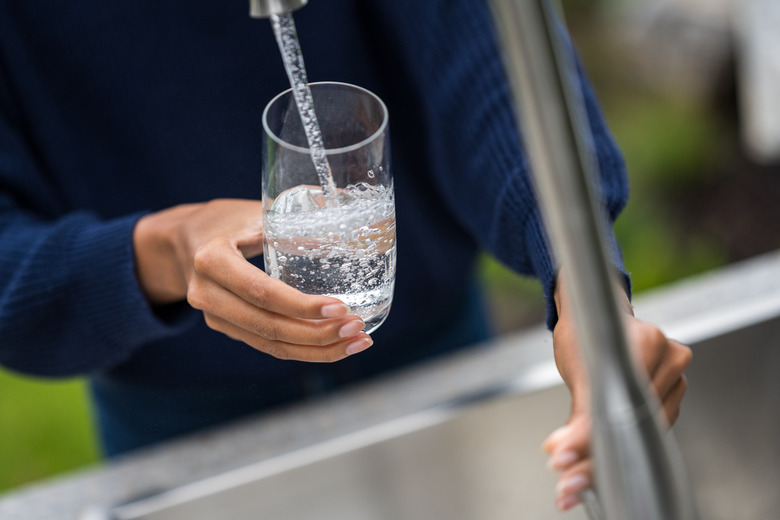How To Remove Copper From Drinking Water
We may receive a commission on purchases made from links.
The Environmental Protection Agency (EPA) regulates corrosive water and the amount of copper that comes from public water supplies, but this does not apply to private wells. If copper is present in your drinking water greater than 1.3 milligrams per liter or 1.3 parts per million after a laboratory water analysis, the situation must be mitigated to avoid health problems. As a do-it-yourselfer with moderate plumbing skills, you can install a fix to remove copper yourself or opt for professional help.
Sources for Copper in Water
Sources for Copper in Water
Too much copper can cause liver and kidney damage or gastrointestinal distress. Another source for copper in drinking water comes from the household's copper plumbing system. Generally, the amount of copper that occurs in groundwater is very low, usually not enough to exceed the EPA's acceptable recommendations for public water supplies. Copper occurs naturally in soil, plant life, animals, and rocks; trace amounts of it do show up in water.
Other sources for copper include pesticides used in farming; compounds added to ponds, lakes, and reservoirs to control algae blooms; mining and manufacturing; as well as industrial and public wastewater releases. Acid-based well water causes copper pipes to release copper into the water system.
Neutralize Acidic Water
Neutralize Acidic Water
When the pH of well water in the household's plumbing system is below 6.0, the water corrodes the interior of the copper plumbing, allowing copper to enter the water. A good indicator of this includes tubs, sinks, and toilets with blue or green staining.
To keep the water from corroding copper pipes, install an acid neutralizer tank at the point where the water enters the home. Fit the tank — sized to the household — with an automatic backwashing head and fill it with a base of gravel and garnet overlaid with a calcite media, leaving enough room for the media to lift during the backwashing phase. As a crushed and screened white marble limestone media, calcite neutralizes the acid and changes the water to a 7.0 pH, a neutral status, which stops pipes from shedding copper.
Flush the Water System
Flush the Water System
If the copper in your water comes from the plumbing system, run the cold water on individual faucets for at least 15 seconds before using it for cooking or drinking if you don't have a treatment system. It is safe to use the flushed water for household plants, laundry, cleaning, and in the dishwasher, but avoid using flushed water from the hot side for cooking, as the heated water contains a higher proportion of copper.
Copper Removal Options
Copper Removal Options
Options for copper removal include a homeowner-installed activated carbon filter unit that you change as needed or a professionally installed reverse osmosis system, backwashing media filtration system, or an ion-exchange system. Reverse osmosis uses a membrane through which the contaminated water is forced, which rejects and dumps the contaminated water.
An ion exchange system relies on acid resin in combination with sodium to remove the copper from the water. A proprietary media system has a tank filed with a brand-name media over a gravel base and an automatic backwashing head that flushes the media periodically and disposes of it on the ground or through a sewer or septic system. Contact your state contractor board or local health department for licensed water conditioning professionals and water analysis laboratories.
